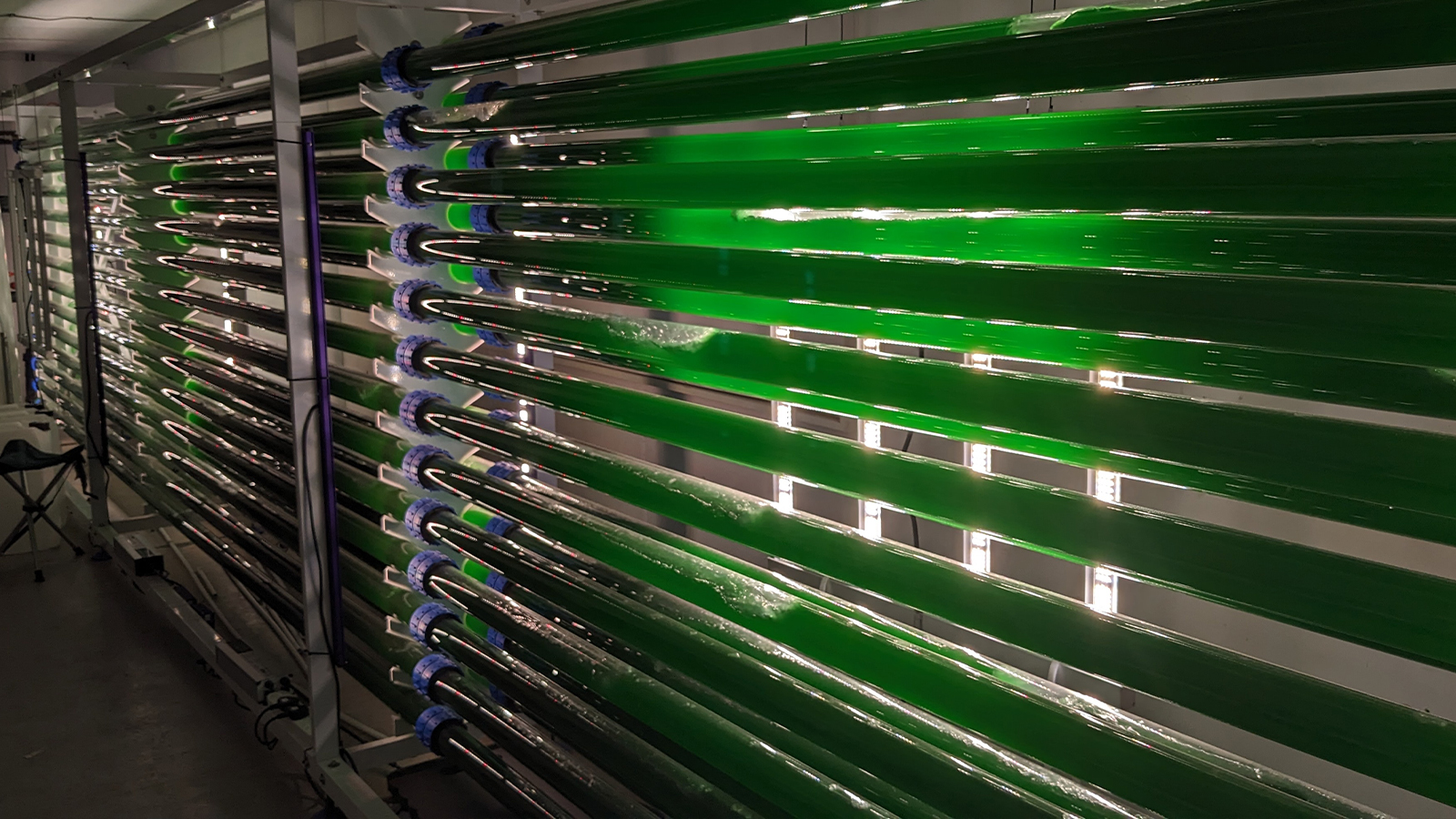Tucked away in probably the most excessive nooks and crannies of the Earth are biodiverse galaxies of microorganisms — some which may assist scour the environment of the carbon dioxide mankind has pumped into it.
One microorganism particularly has captured scientists’ consideration. UTEX 3222, nicknamed “Chonkus” for the best way it guzzles carbon dioxide, is a beforehand unknown cyanobacterium present in volcanic ocean vents. A latest paper within the journal Utilized and Environmental Microbiology discovered it boasts distinctive atmosphere-cleaning potential — even amongst its well-studied friends. If scientists can determine the way to genetically engineer it, this single-celled organism’s pure quirks might change into supercharged right into a low-waste carbon seize system.
Cyanobacteria like Chonkus, typically referred to by the misnomer blue-green algae, are aquatic organisms that, suck up gentle and carbon dioxide and switch it into meals, photosynthesizing like vegetation. However tucked away inside their single-celled our bodies are compartments that permit them to pay attention and gobble up extra CO2 than their distant leafy family members. When present in unique environments, they will evolve distinctive traits not usually present in nature. For microorganism researchers, whose area has lengthy revolved round a handful of easy-to-manage organisms like yeast and E. coli, the untapped biodiversity heralds new prospects.
“There’s an increasing number of pleasure about isolating new organisms,” mentioned Braden Tierney, a microbiologist and one of many lead authors of the paper that recognized Chonkus. On an expedition in September 2022, Tierney and researchers from the College of Palermo in Italy dove into the waters surrounding Vulcano, an island off the coast of Sicily the place volcanic vents in shallow waters present an uncommon habitat — illuminated by daylight and but wealthy with plumes of carbon-dioxide. The situation yielded a veritable soup of microbial life, together with Chonkus.
John Kowitz / Two Frontiers
After Tierney retrieved flasks of the seawater, Max Schubert, the opposite lead creator of the cyanobacteria paper and a lead mission scientist on the scientific nonprofit Align to Innovate, started working figuring out the completely different organisms in it. Schubert mentioned that out within the open ocean, cyanobacteria like Chonkus develop slowly and are thinly dispersed. “But when we needed to make use of them to tug down carbon dioxide, we might need to develop them rather a lot sooner,” he mentioned, “and develop in concentrations that don’t exist within the open ocean.”
Again within the lab, Chonkus did simply that — rising sooner and thicker than different beforehand found cyanobacteria candidates for carbon seize methods. “Once you develop a tradition of micro organism, it seems like broth and the micro organism are very dilute within the tradition,” Schubert mentioned, “however we discovered that Chonkus would settle into these things that’s far more dense, like a inexperienced peanut butter.”
Chonkus’ peanut butter consistency is necessary for the pressure’s potential in inexperienced biotechnologies. Sometimes, biotech industries that use cyanobacteria and algae must separate them from the water they develop in. As a result of Chonkus does so naturally with gravity, Schubert says, it might make the method extra environment friendly. However there are many different puzzles to resolve earlier than a discovery like Chonkus can be utilized for carbon seize.
CyanoCapture, a cyanobacteria carbon seize startup based mostly in the UK, has developed a low-cost methodology of catching carbon dioxide that runs on biomass, housing algae and cyanobacteria in clear tubes the place they will develop and filter CO2. Though Chonkus exhibits distinctive promise, David Kim, the corporate’s CEO and founder, mentioned biotechnology firms must have extra management over its traits, like carbon storage, to make use of it efficiently, and that requires discovering a solution to crack open its DNA.

CyanoCapture
“Oftentimes we’ll discover in nature {that a} microbe can do one thing sort of cool, however it doesn’t do it in addition to we have to,” mentioned Henry Lee, CEO of Cultivarium, a nonprofit biotech start-up in Watertown, Massachusetts, that makes a speciality of genetically engineering microbes. Cultivarium has been working with CyanoCapture to assist them examine Chonkus however has but to determine the way to tinker with its DNA and enhance its carbon capturing attributes. “Everyone needs to juice it up and tweak it,” he mentioned.
Because the expedition to Vulcano the place Tierney scooped up Chonkus, the nonprofit he based to discover extra excessive environments all over the world, the Two Frontiers Challenge, has additionally sampled sizzling springs in Colorado, volcanic chimneys within the Tyrrhenian Sea close to Italy, and coral reefs within the Crimson Sea. Maybe on the market, researchers will discover a chunkier Chonkus that may pack away much more carbon, microbes that may assist regrow corals, or extra organisms that may ease the pains of a quickly warming world. “There’s no query we’ll hold discovering actually, actually fascinating biology in these vents, Tierney mentioned. “I can’t stress sufficient that this was simply the primary expedition.”
Kim famous that out of all of the microbes on the market, lower than 0.01 p.c have been studied. “They don’t signify the true arsenal of microbes that we might doubtlessly work with to attain humanity’s targets.”





